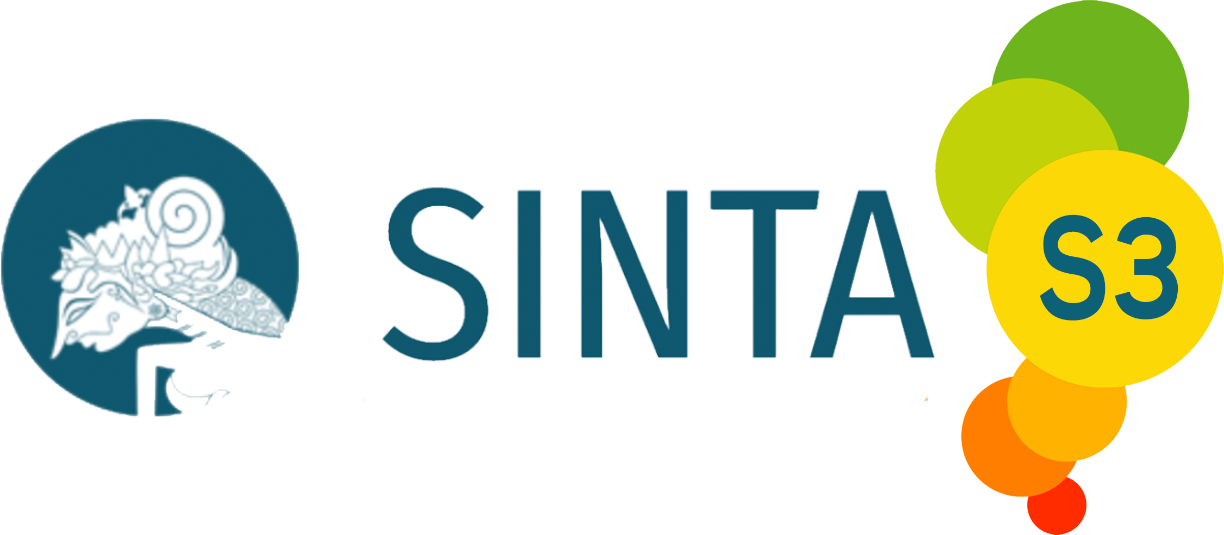Analysis of Financial Statement Performance in the Textile Industry for the 2012-2021 Period
Abstract
This study aims to determine the financial performance of three textile companies, namely PT. Asia Pacific Investama (MYTX), PT. Asia Pacific Fibers (POLY), and PT. Sri Rejeki Isman (SRIL) in the last ten years, 2012-2021. This study uses a quantitative-descriptive method with the type of data used is secondary data, obtained from the annual financial statements of each company at IDN Financial with the analysis using liquidity ratios including current ratio and quick ratio, solvency ratio including debt to assets ratio (DAR) and debt to equity ratio (DER), and profitability ratios include net profit margin (NPM) and return on assets (ROA) methods. The results based on the calculation of the liquidity ratio found that the performance of MYTX is not good, POLY is not good, and SRIL is quite good in the Current Ratio and Quick Ratio. In the solvency ratio, it was found that the performance of MYTX was quite good, POLY was not good, and SRIL was quite good in DAR. In contrast, the performance of the three companies is quite good in DER. And on the profitability ratios, it was found that the performance of the three companies is quite good in ROA or NPM.
Downloads
References
Darmawan. (2020). Dasar-dasar Memahami Rasio dan Laporan Keuangan. UNY Press.
Destiani, T., & Hendriyani, R. M. (2022). Analisis Rasio Keuangan untuk Menilai Kinerja Keuangan Perusahaan : Studi Kasus pada PT Unilever Indonesia Tbk Tahun 2016-2020. Al-Kharaj : Jurnal Ekonomi, Keuangan & Bisnis Syariah, 4(1), 136–154. https://doi.org/10.47467/alkharaj.v4i1.488
Dhian Lia Gustina, A. W. (2015). Analisis Rasio Keuangan Dalam Memprediksi Perubahan Laba. Management Analysis Journal, 5(5), 89.
Diah Fitriyani et all. (2022). Komparasi Rasio Profitabilitas: PT. Telkom Indonesia Sebelum dan Selama Pandemi Covid-19 Diah. Disclosure: Journal of Accounting and Finance, 2(2), 111–125.
Endah Purwitajati dan I Made Pande Dwiana Putra. (2016). Pengaruh Debt To Equity Ratio Pada Return Saham Dengan Ukuran Perusahaan Sebagai Pemoderasi. E- Jurnal Akuntansi Universitas Udayana, 15(2), 1086–1114.
Faisal, A., Samben, R., & Pattisahusiwa, S. (2017). Analisis kinerja keuangan. KINERJA, 14(1), 6–15. https://doi.org/10.29264/jkin.v14i1.2444
Hery. (2015). Analisis Kinerja Manajemen. PT. Grasindo.
Husna, A., & Satria, I. (2019). Effects of Return on Asset, Debt To Asset Ratio, Current Ratio, Firm Size, and Dividend Payout Ratio on Firm Value. International Journal of Economics and Financial Issues, 9(5), 50–54. https://doi.org/10.32479/ijefi.8595
Kasmir. (2014). Analisis Laporan Keuangan (7th ed.). Rajawali Pers.
Markonah, M., Salim, A., & Franciska, J. (2020). Effect of Profitability, Leverage, and Liquidity to The Firm Value. DIJEFA : Dinasti International Journal of Economics, Finance & Accounting, 1(1), 83–94. https://doi.org/10.31933/DIJEFA
Martasari, E., Saparahayuningsih, S., & Delrefi, D. (2018). Kepercayaan Diri Anak Dalam Pembelajaran Pengembangan Berbahasa Pada Kelompok B1 Paud Assalam Muara Bangkahulu Kota Bengkulu. Jurnal Ilmiah Potensia, 3(1), 11–17. https://doi.org/10.33369/jip.3.1.11-17
Masyitah, E., & Harahap, K. K. S. (2018). Analisis Kinerja Keuangan Menggunakan Rasio Likuiditas Dan Profitabilitas. JAKK ( Jurnal Akuntansi Dan Keuangan Kontemporer), 1(1), 33–46.
Mu’arifin, H., & Irawan, P. (2021). Analisis Kinerja Keuangan Perusahaan Ditinjau dari Rentabilitas, Likuiditas dan Solvabilitas. Syntax Idea, 3(3), 533–545.
Nurhaliza, S. (2021). Menperin: Industri Tekstil Paling Terdampak Pandemi dan Perlu Perhatian. https://www.idxchannel.com/economics/menperin-industri-tekstil- paling-terdampak-pandemi-dan-perlu-perhatian.
Petty Aprilia dan Imam Hidayat. (2022). Analisis Laporan Keuangan (1st ed.). Jawa Tengah: CV Eureka Media Aksara.
Riyardi, A., Setiaji, B., Hasmarini, M. I., Triyono, & Setyowati, E. (2015). Analisis Pertumbuhan Industri Tekstil dan Produk Tekstil di Berbagai Provinsi di Pulau Jawa. Univesity Research Colloquium, 16–25. https://publikasiilmiah.ums.ac.id/bitstream/handle/11617/5138/2.pdf
Rizki, M. S. (2019). Pengaruh Rasio Likuiditas dan Solvabilitas Terhadap Profitabilitas Demgam Pedekatan Structural Equation Modelling. BENEFIT Jurnal Manajemen Dan Bisnis, 4(1), 94–101.
Sanjaya, S., & Sipahutar, R. P. (2019). Pengaruh Current Ratio, Debt to Asset Ratio dan Total Asset Turnover terhadap Return on Asset pada Perusahaan Otomotif dan Komponennya yang Terdaftar di Bursa Efek Indonesia. Jurnal Riset Akuntansi Dan Bisnis, 19(2), 136–150. https://doi.org/10.30596/jrab.v19i2.4599
Saputri, Y. (2018). Analisis Kinerja Keuangan Berdasarkan Rasio Likuiditas Dan Profitabilitas Serta Solvabilitas Pada PT Bina Karya Nuansa Sejahtera Di Samarinda. Journal Ilmu Akuntansi Mulawarman (JIAM), 3(4), 1–10.
Setiawati, L. W., & Lim, M. (2020). Analisis Pengaruh Profitabilitas, Ukuran Perusahaan, Leverage, dan Pengungkapan Sosial Terhadap Nilai Perusahaan Pada Perusahaan Manufaktur yang Terdaftar di Bursa Efek Indonesia Periode 2011--2015. Suparyanto Dan Rosad (2015, 5(3), 248–253.
Shofwatun, H., Kosasih, K., & Megawati, L. (2021). Analisis Kinerja Keuangan Berdasarkan Rasio Likuiditas Danrasio Profitabilitas Pada Pt Pos Indonesia (Persero). KRISNA: Kumpulan Riset Akuntansi, 13(1), 59–74. https://doi.org/10.22225/kr.13.1.2021.59-74
Sofyan, M. (2019). Rasio Keuangan Untuk Menilai Kinerja Keuangan. Akademika, 17(2), 115–121. https://doi.org/http://dx.doi.org/10.51881/jam.v17i2.173
Suhendro, D. (2017). Analisis Profitabilitas dan Likuiditas Untuk Menilai Kinerja Keuangan Pada PT Siantar Top Tbk. Human Falah, 4(2), 218–235.
Trianto, A., Studi, P., Politeknik, A., & Palembang, D. (2017). Analisis Laporan Keuangan Sebagai Alat Untuk Menilai Kinerja Keuangan Perusahaan Pada Pt. Bukit Asam (Persero) Tbk Tanjung Enim. 8(03).
Wijaya, R. (2019). Analisis Perkembangan Return On Assets (ROA) dan Return On Equity (ROE) untuk Mengukur Kinerja Keuangan. Jurnal Ilmu Manajemen, 9(1), 40–51.
Copyright (c) 2023 International Journal of Economics, Business, and Entrepreneurship

This work is licensed under a Creative Commons Attribution-NonCommercial 4.0 International License.
The objectives of International Journal of Economics, Business, and Entrepreneurship (IJEBE) are to establish an effective communication between policy makers, government agencies, academic and research institutions and professional’s person concerned with business, entrepreneurship and Small Medium Enterprise (SME) in a community.
Written application must be made to the Managing Editor for permission to reproduce any of the contents of the journal for use in other than course of instruction—e.g., inclusion in books of readings or in any other publications intended for general distribution. In consideration for the grant of permission by the journal in such instances, the applicant must notify the author(s) in writing of the intended use to be made of each reproduction. Normally, the journal will not access a charge for the waiver of copyright.
International Journal of Economics, Business, and Entrepreneurship (IJEBE) publishes original papers, literature reviews, empirical studies, theoretical frameworks, case studies, and book reviews.

International Journal of Economics, Business, and Entrepreneurship (IJEBE) is licensed under a Creative Commons Atribusi-noncommercial 4.0 Internasional License







